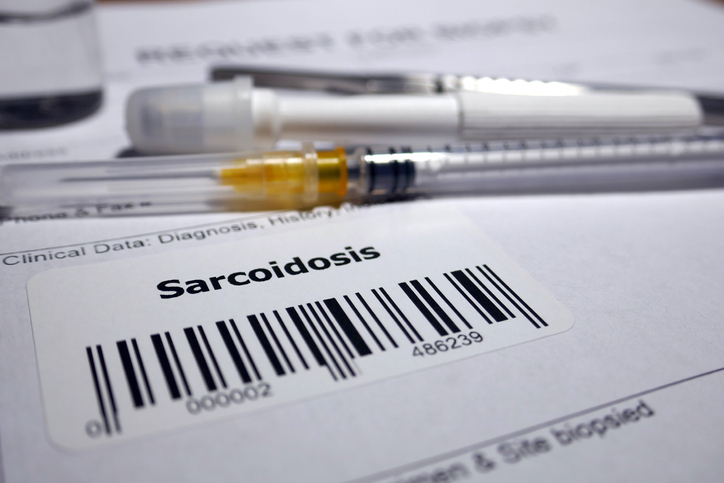Pain
Types of Sarcoidosis

Sarcoidosis is an inflammatory disease characterized by the growth of small clusters of inflammatory cells in various parts of the body, including the skin, lungs, lymph nodes, heart, or other organs. Types of sarcoidosis include pulmonary sarcoidosis, cardiac sarcoidosis, neurosarcoidosis, multiorgan sarcoidosis, Löfgren syndrome, ocular sarcoidosis, and cutaneous sarcoidosis.
Pulmonary sarcoidosis involves the growth of granulomas (small clumps of inflammatory cells) in the lungs. The granulomas can disappear on their own. If they do not heal, the lung tissue can be damaged, resulting in a condition known as pulmonary fibrosis. Treatment-resistant pulmonary sarcoidosis is a type of sarcoidosis that does not respond to typical steroid treatment.
Cardiac sarcoidosis involves the growth of granulomas in the heart. These granulomas can affect heart function, including rhythm and blood flow. The best outcomes occur when this type of sarcoidosis is diagnosed and treated early.
Neurosarcoidosis involves the growth of granulomas in the brain, spinal cord, or peripheral nerves. Nerves in the head and face as well as the hypothalamus and pituitary gland are most commonly affected. It is highly treatable when it is caught early.
Multiorgan sarcoidosis involves multiple organs and body systems. The affected organs or body parts vary from person to person.
Löfgren syndrome is a version of sarcoidosis that presents with erythema nodosum, polyarthritis (pain in 5 or more joints), and hilar adenopathy (the enlargement of the lymph nodes of the pulmonary hila). Other symptoms include inflammation of the eye(s), fever, arthralgias, inflammation of the ankle(s) and possible pulmonary involvement.
Ocular sarcoidosis involves any part of the eye, causing inflammation of the eye wall (episcleral layer of the eye of the sclera). It may also cause eyelid abnormalities, optic neuropathy, tear gland enlargement, glaucoma, or cataracts. Granulomas can develop on the eye as well.
Cutaneous sarcoidosis is characterized by granulomas that affect the skin. There are several classifications/presentations of cutaneous sarcoidosis:
- Erythema nodosum is characterized by reddish, painful lumps on the extremities, usually on the front part of the leg below the knee.
- Lupus pernio is characterized by red or purple lumps or plaques that form most frequently on the nose, cheeks, ears, or lips; they may also form on the fingers or toes.
- Macular sarcoidosis is characterized by red/brown areas of discoloration or raised skin in the areas around the eyes and nose.
- Plaque sarcoidosis is characterized by round or oval red/brown plaques or patches of skin on the face, scalp, or back.
Subcutaneous nodular sarcoidosis is characterized by nontender, firm, oval, flesh-colored lesions that typically appear on the extremities or trunk.














